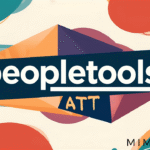Beyond the Hype: Why Crypto Games Need Better Content to Succeed
The blockchain gaming space raised over $1.1 billion in Q2 2024 alone, marking the best quarter since 2022. Yet many of these well-funded projects share a common weakness that could determine their long-term success: poor content quality.
While developers pour millions into smart contracts and tokenomics, they often treat educational content, guides, and player resources as afterthoughts.
This content gap isn’t just about having prettier websites or longer blog posts. It’s about building the foundation that helps players understand complex game mechanics, discover new features, and stay engaged long enough for token economies to work.
The games that master this balance between technical innovation and clear communication will dominate the next phase of Web3 gaming.

The Discovery Problem
Crypto games face a unique challenge that traditional games don’t encounter, and that’s the lack of educational content for players.
Gamers need to understand blockchain concepts while also grasping game mechanics. Popular titles like Axie Infinity and Pixels succeeded partly because they created comprehensive content that made complex systems accessible to mainstream audiences.
Most players discover new games through search engines rather than app stores, making search visibility crucial for success. Games that invest in keyword-targeted guides, tutorial content, and educational resources consistently outrank competitors with better graphics but weaker content strategies.
Working with specialized agencies that understand SEO for crypto projects can help developers create content strategies that address both gaming and blockchain-specific search terms. This visibility gap often determines which projects gain traction and which fade into obscurity.
The integration of AI agents into games like Parallel and Planet Mojo in 2025 creates even more need for explanatory content. Players need to understand how these systems work, what benefits they provide, and how to maximize their gaming experience through proper interaction with AI features.
Building Trust Through Education
Retention in blockchain games often struggles due to players’ lack of understanding of crypto mechanics. Many drop the game if they don’t grasp how to stake tokens, claim rewards, or participate in governance. To avoid mistakes, they simply abandon the game.
Educational content bridges this gap and builds trust. By explaining wallet integration, gas fees, and token ecosystems, games help players feel confident in participating. Regular updates on tokenomics, security changes, and future plans also promote transparency, a feature traditional games often lack.
The best projects view content as community-building, not marketing. They answer real questions, resolve concerns, and provide value, even for players who haven’t spent money. This approach drives organic word-of-mouth growth, which is more effective than paid ads in the crypto space.
Technical Complexity Demands Clear Communication
Blockchain games are inherently more technically complex than traditional ones, requiring players to learn multiple interfaces such as game clients, blockchain explorers, DeFi protocols, and external marketplaces. Without clear documentation, these systems can overwhelm new users.
Games like EVE Frontier, which merges blockchain tech with a space MMORPG, struggle with explaining these complexities to both existing and new players.
The play-to-earn model adds another layer of complexity. Players need clarity on how much they can earn, how to withdraw funds, and the associated costs (including taxes). Transparent, easily accessible content about these aspects can help secure committed players.
Content as a Competitive Advantage
While the crypto gaming market grows increasingly crowded, quality content becomes a differentiating factor that’s harder for competitors to replicate quickly. SEO-optimized game guides provide long-term value, attracting players even years after publishing, and that’s something that paid advertising can’t achieve. Even in the age of AI.
Progressive crypto games treat content creation as part of the development process, integrating writers and educators into product decisions. This ensures that new features are clearly explained from day one.
The Path to Success
Being an innovator isn’t enough in crypto gaming. Only projects that combine great gameplay with educational content will capture mainstream audiences. Treating content as an integral part of game development ensures lasting player engagement.
Well-developed onboarding, searchable knowledge bases, and regular updates will keep players informed and engaged.

Conclusion
The future of crypto gaming belongs to projects that prioritize content quality as a core competitive advantage. As the industry matures, games that focus on user-first communication, education, and community-building will stand out.
Success in blockchain gaming is not just about creating innovative mechanics, but also ensuring players understand and enjoy the experience through great content.





